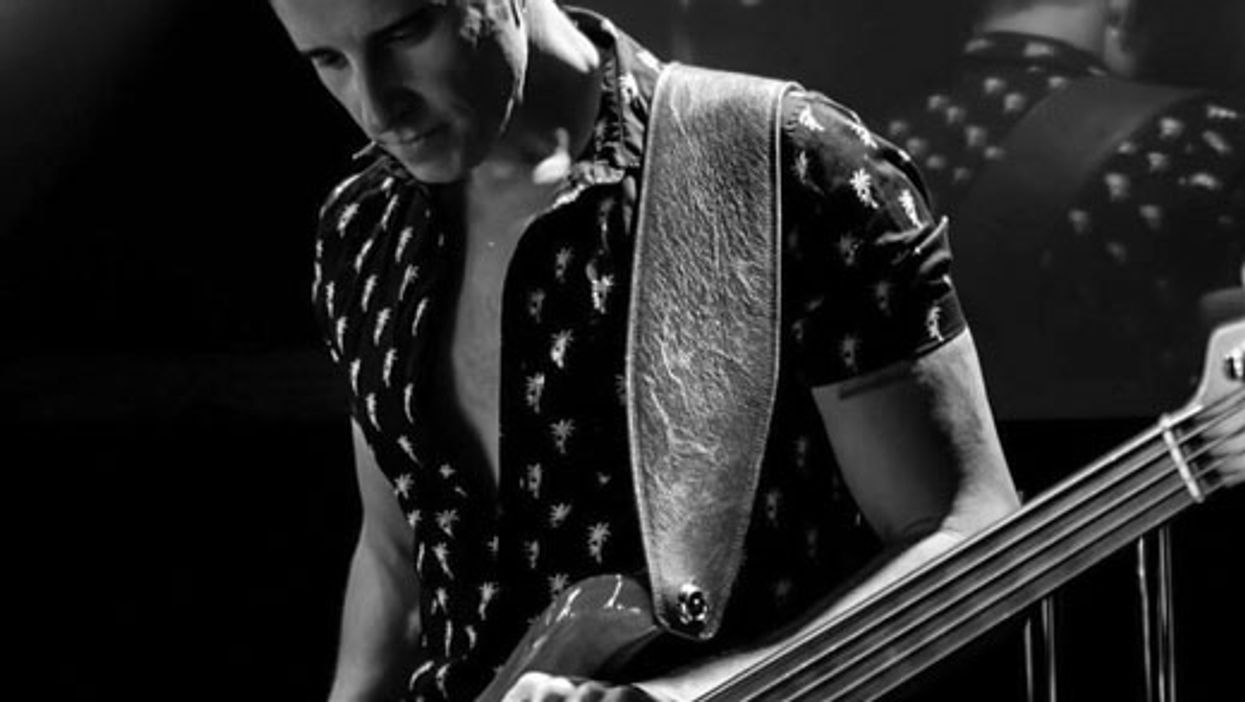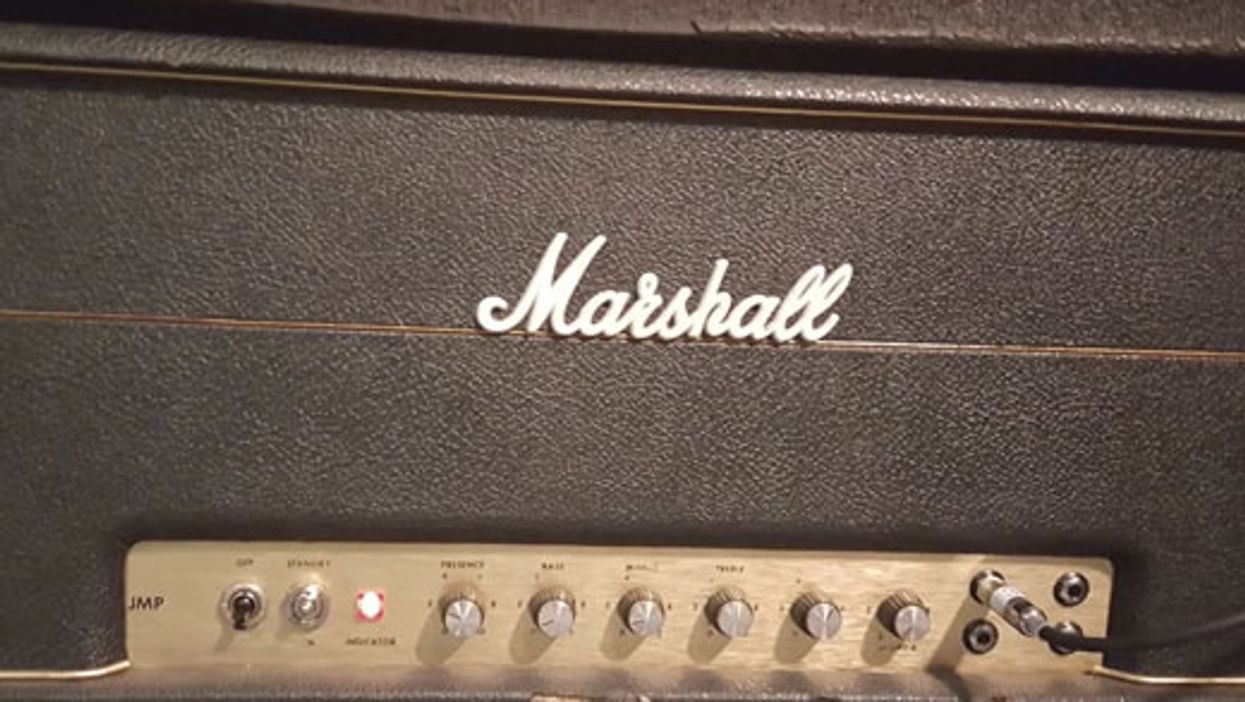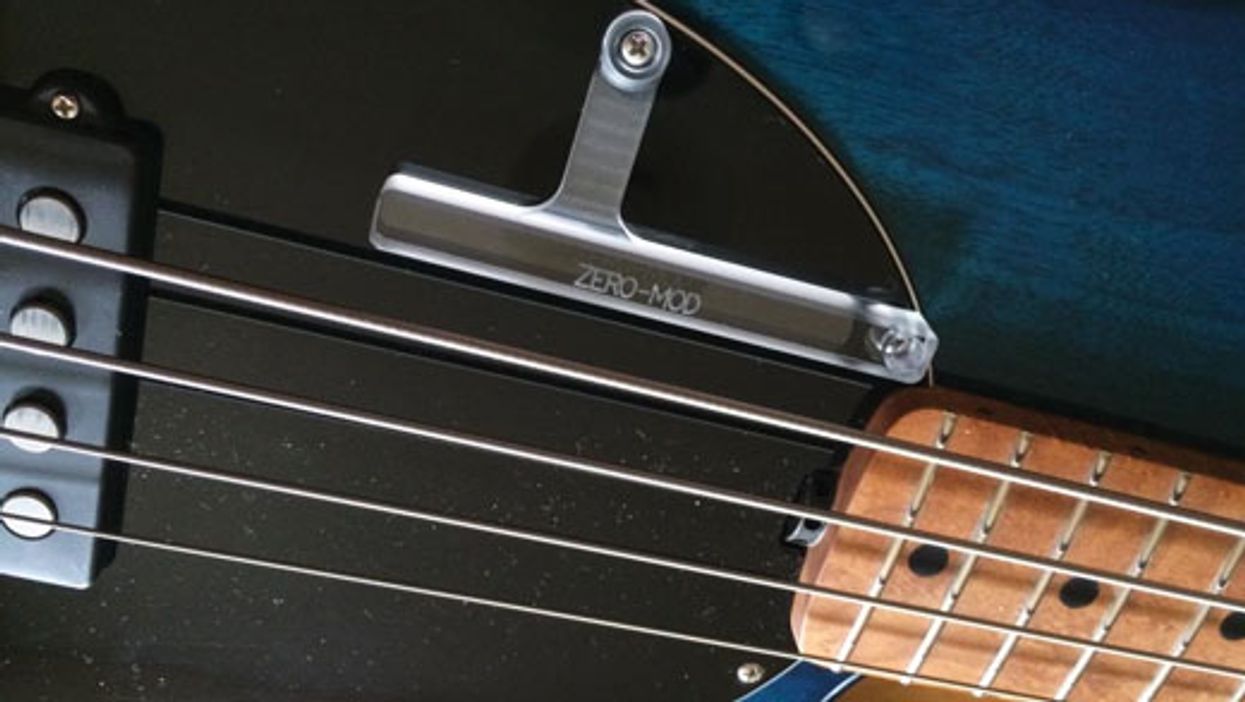When it comes to funky bass playing, slap style is one way to get there. But when you want some really funky stuff, it takes something more: an envelope filter pedal.
Think Space Bass. Think Star Sunglasses. Think Bootsy, baby – and the soundtrack for Superbad!
If that doesn’t conjure up the envelope filter sound, image a bass sound that’s gooey, slurpy, quacky, and syrupy. Play the notes hard and out comes a big quack, starting way down low before soaring up into a big glob of juicy bass. Play it gentle, and who knows – maybe a big burp of tar, maybe bass molasses, maybe your bass mixed up with Laffy Taffy.
an envelope filter is something like a wah pedal that responds to your playing attack. Generally, most pedals will allow you to adjust how sensitive the effect is to your attack. Another knob – range – adjusts how far a note sweeps when the envelope is triggered. From there, each pedal has its own special features that produce its trademark sound.
What you’ll get here is an introduction to three envelope pedals. I’ve picked a range of pedals, from an easy-on-the wallet Digitech Bass Synth Wah (street, $80) to the boutique Pigtronix EP-1 (street, $220) and the wacky Chunk Systems Agent 00Funk (about $230 street) that takes you into the synth realm when you add in their Brown Dog fuzz box. Rather than trying to go in-depth with each pedal, I’ll focus on their usable sounds for funk bass and how you can get those sounds when you plug in and dial ''em up.
The Setup
Envelope pedals are a finicky breed. Sometimes you can tweak for a long time and not get a usable sound. Then you pick up the pedal again, turn the knobs a bit differently, and there you are – funk heaven.
I worked with these pedals over several weeks, taking some of them to gigs to see what happened under fire. My test bass was a G&L L-2500 five string. It’s an instrument with a wide frequency response and killer attack, just the thing to bring the best out of an envelope filter – remember, the filter responds to attack.
Each pedal ran first through an SWR Workingman’s 12 practice amp and then through a bigger rig with a classic SWR SM-400 head into a GK 410 cab.
As part of this tour, I’ll direct you to the company web page for the pedals – each site has sound samples and an overview of controls, settings and features. Be sure to check those out.

Takin’ It Easy
The Digitech Bass Synth Wah is the simplest of the bunch to use -- perhaps because it''s digitally based – the other two are analog pedals.
The BSW has just four knobs and an on/off switch. The first knob controls sensitivity to your note attack. The last knob chooses the pedal''s filter Type. The two knobs in the middle vary in their purpose, depending on which of its seven Types you choose. I’m going to focus on one type, the Envelope Sub, because it comes closest to the classic envelope sound and combines its sound with an octave-down generator to create a big, fat bottom end.
In the Envelope Sub mode, the second knob is for blending the filtered sound with the original signal. That helps keep the sound full, round, and natural, with just the amount of funky flavoring you''re after. The third knob affects the range of the envelope''s sweep. Keep it low, and you’ll stay down in the tar pits. Turn it up and your notes get some aggressive bite when you play harder.
As with most envelope pedals, you''ll end up trading the sensitivity and range settings (sometimes called “sweep”) back and forth. Turn up the sensitivity and the range gets turned down because the stronger response to your attack sends your notes on a big sweep. And vice-versa.
A few other thoughts about the BSW compared to the other three. First, as a digital pedal, its sound has less depth than the others, even though it still sounds nice. Second, Digitech uses buffered switching rather than the round, silver “true bypass” style of switch – no problems, though, because it''s a reliable alternative. Third, this pedal has some other useful sounds, and some not-so-useful ones. Using the Type 7 setting, for example, the pedal serves double duty as a nice octave-down capability. Just turn up the Control knob half way or so and turn the Range control all the way down.
To wrap up, if you want to try out the basics of envelope-filter funk, the Digitech Bass Synth Wah will get you there without a big hit on your wallet and with a fairly short learning curve. On to the world of analog envelope filters, with their bigger, rounder sound and somewhat more difficult controls.
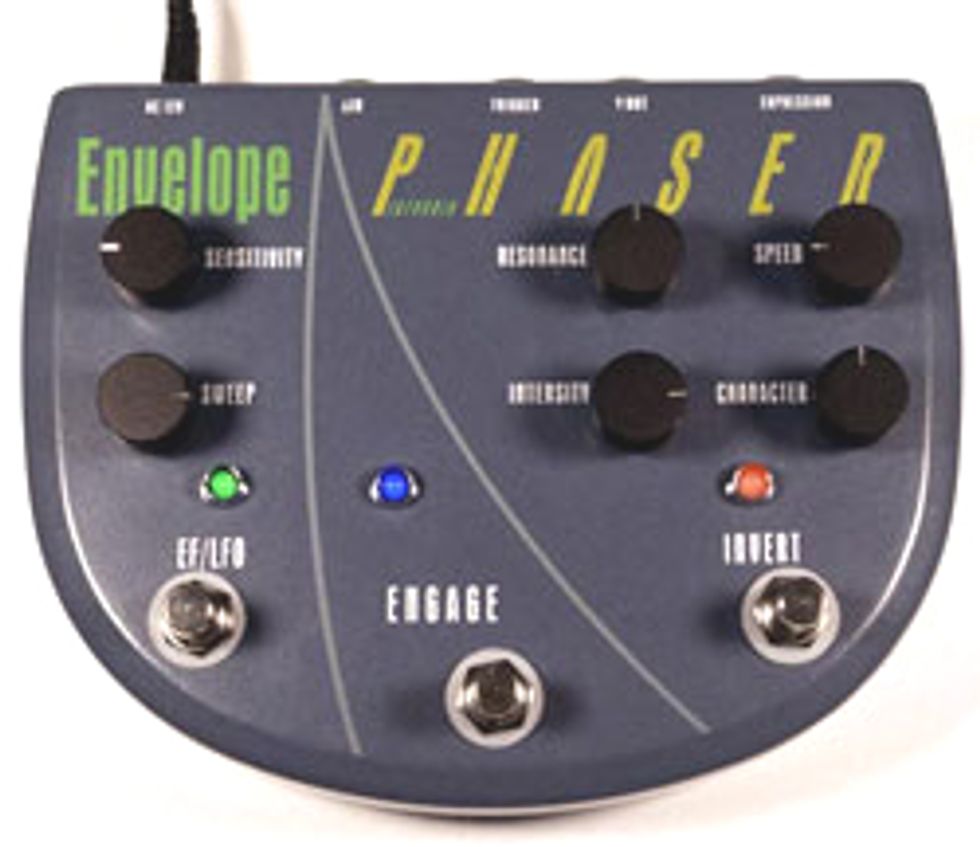
Pigtronix EP-1 Envelope Phaser
The EP-1 comes as a largish (7" wide by 6" deep) hefty metal package with rounded edges, painted in a nice muted blue. Six knobs and three switches are labeled with clean white lettering. No batteries for this unit – it runs off a 12 volt AC wall wart (provided). This pedal has both phaser and envelope functions, but for funk bass purposes the envelope filter section of the EP-1 is the right place to be.
Just two knobs control the basic envelope filter functions – Sensitivity and Sweep – on the far left side of the pedal. The two middle knobs – Resonance and Intensity – determine how strong the effect is brought into the mix.
Getting going with those funky Pigtronix sounds is fairly simple. First, set the Sweep a bit below straight up. Then start playing your bass while slowly turning up the Sensitivity knob until you hear what you’re after. With my G&L bass'' hot pickups, Sensitivity ended up set at around 10 o’clock. Ultimately, fine tuning the filter settings is a matter of juggling between the two knobs, but when the Sweep reaches somewhere between noon and one o’clock, the green indicator knob stays lit and no effect is produced.
Once the envelope is set up, the Resonance and Intensity settings come into play. Higher Resonance settings create a brighter effect that cuts better in the mix. Likewise, Intensity serves as a blend knob – the farther clockwise the knob is set, the more the effect dominates the sound. I found that turning up both most of the way created a rich, effected sound.
One other setting is central to the EP-1’s sound – the Invert switch. This switch either adds or subtracts the phased signal from the clean signal. For bass players, the subtracted mode creates a huge low end that adds fatness to the start of a note’s attack. This is indicated by an LED that turns from red (subtract) to yellowish green (add) depending on the mode. And as you dial things in, you’ll find that a little twitch of the Sensitivity or Sweep knobs creates yet another variation on the Pigtronix sound, too!
Something important to remember is that envelope pedals are designed to respond to a player’s touch. This is particularly noticeable with the EP-1. Once you’re dialed in, if you touch the string too lightly, you’ll just get the low spectrum of sound. Attack too hard and the effect is nearly gone, producing just the upper edge of the note.
Not to worry, though – there''s plenty of room in the middle for a variety of funky quacks. But the degree of attack seemed to vary across the sound spectrum. Low notes trigger the EP-1 more easily, while high notes take a bit more attack. Playing up the neck seemed more difficult to control, perhaps because the strings are a tiny bit closer to the pickups and produce more output.
As Pigtronix claims on its website, the EP-1 has “ridiculously FAT, funky tone.” True that! This analog circuitry makes the EP-1 sound smooth and fat. Head here and check it out for yourself.
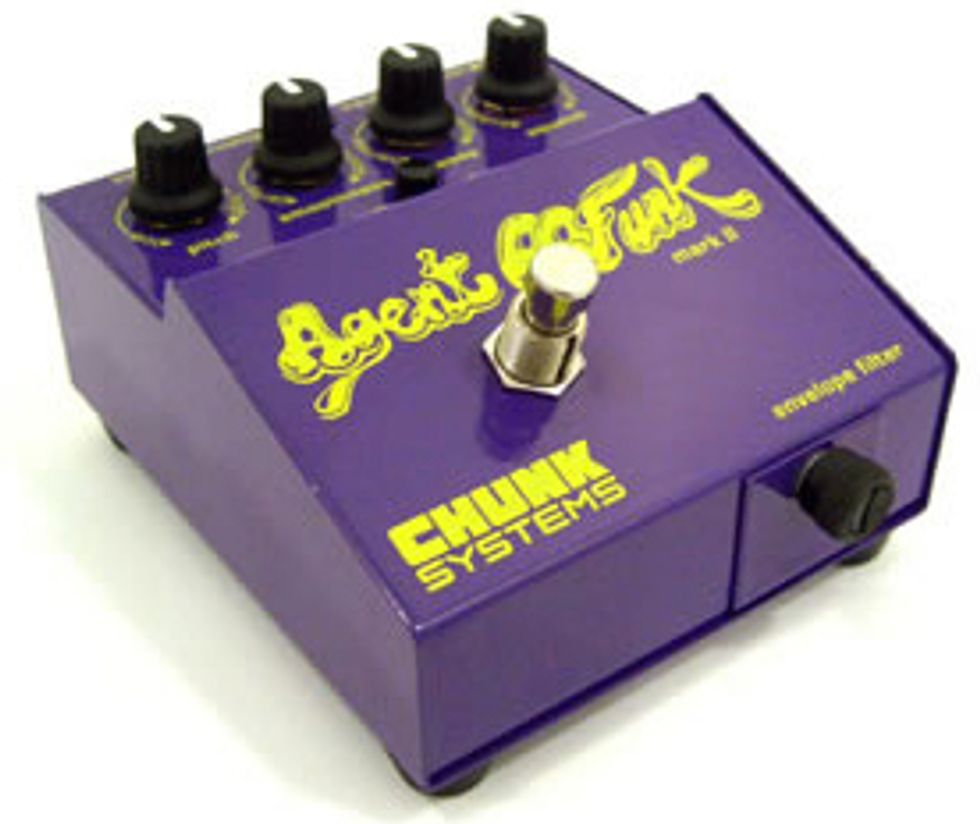
The Name’s Funk… Agent 00Funk!
From Chunk Systems comes not one, but two pedals, each sounding great on its own, but together – amazing. You’d swear you were playing a synth bass!
Start off with the deep purple colored Agent 00Funk, an envelope filter covered with just the right cheesy yellow lettering that harkens back to the ''70s. This pedal has four knobs, plus a switch. And of course, the usual bypass pushbutton. For envelope funk stuff, two knobs are key, but it takes awhile to get them figured out, partly because they are labeled differently than most and they work a bit differently, too.
The first knob to dial in is called "Pitch." Its basic function is to set the resting frequency of the envelope''s sweep. Set it too low and the pedal produces nothing but a muffled thud; set it too high and there’s no effect. But when you bring up the Pitch to the sweet spot, you''re in business (I found that to be at about 1 o''clock). Next, it''s time for the Sweep knob, similar to the sensitivity knob on other pedals. Somewhere between 10 o''clock and noonish, the Sweep is able to trigger the envelope for plenty of good quacking.
The basic envelope is fine-tuned with Smoothness and Squelch knobs. Smoothness controls how fast the filter sweeps when a note is played – around noon is a versatile location, but moving a bit to either side gives shorter or longer leaps. The Squelch knob is related to resonance or blend on some other knobs, influencing how prominently the filtered sound comes out. Listen to it here.
I should add that there''s also an Up/Down slider switch, but something different than the Invert of the Pigtronix EP-1. The normal envelope mode for the Agent 00Funk is Up. When you shift to down and dial ''er in, the pedal does something really crazy, sounding the initial attack of the note, then swallowing it down deep, and finally coughing it back up as the note decays. In small doses, it can be cool, sort of an ow-ow-ow thing. In Down mode, the Sweep knob works backwards – unlike the Up mode where turning up the Sweep dials out the effect, Down mode increases the effect as you turn up until it finally works like a kick drum. Hmmm.
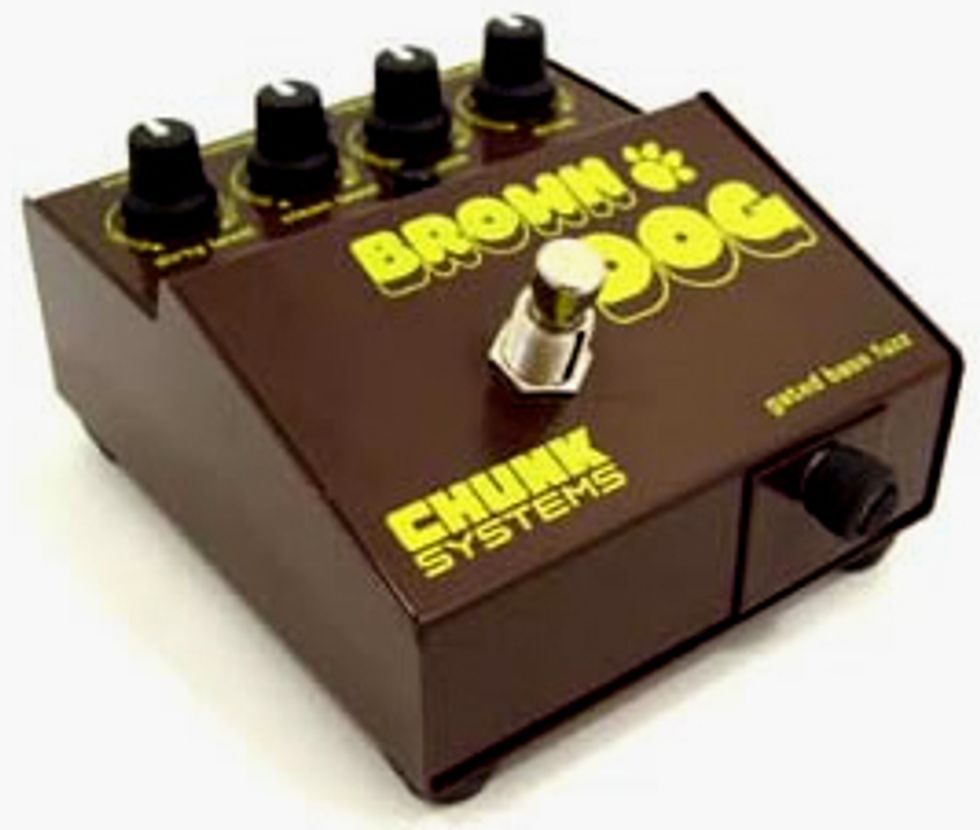
When the fun begins, though, is after the second Chunk Systems pedal comes out – the Brown Dog. This is a gated fuzz box designed for bass that lets you adjust the amount of Dirty and Clean sounds as well as the degree of Drive. The Gate knob basically mutes the Dirty section of the pedal until a note is played, helping keep things nice and quiet, yet dishing out the dirt when you’re on the attack. In all, the Brown Dog is both dirty and full bodied, allowing you plenty of variety between the two. It can be lots of fun on its own. Here are some samples.
Okay, so grab two extra cables and start plugging things together. Agent Funk, memorize these instructions and swallow them -- 1) your bass goes into the Dog''s input, 2) the Dog’s output goes to the 00Funk’s input. 3) But wait…you’re not done yet! Both pedals have an envelope jack. Linking the two together adds the envelope effect to the fuzz and suddenly, you’re a synth bass!
And this brings you some crazy sounds. One of my fave''s was turning the Clean all the way down and the Gate all the way up. That way the Brown Dog sends a note that starts tight and cuts off fast. Dial in the right amount of envelope and you''d swear that somebody was jamming on a keyboard instead of plucking the strings of a bass. It''s amazingly touch sensitive, too, between popping open the gate and triggering the envelope, lots of sounds start happening. I kept catching my mouth moving open and closed in sync to the quacky vocalese pouring out of the amp. Phew!
Yes, picking up both pedals will be a bit spendy – about $225 each – but you can have endless hours of fun dialing in gallons of juicy synth sounds (go to the end of the sound samples for either pedal to here the synth possibilities). And of course, each pedal can do plenty on its own. So if you like your envelope, “Shaken, not stirred,” it''s time to call on your own secret agent – Agent 00Funk!
Only a Starting Point – Now Roll Your Own Funk!
I hope you''ve gotten an idea of the funkalicious possibilities from envelope filter pedals. This is only the start, with even more outrageous possibilities coming from manual wah pedals, synth pedals, and variations on the basic themes of these three examples.
How you get your funk has lots to do with your technological prowess – and your wallet. Even a modest pedal like the Digitech (and similar offerings from the other big pedal companies) can turn a basic chunk of funk into gooey, liquid goodness. And if you think the envelope is limited to just basic bass lines, see what happens when you punch one in for a solo. It’s not a common bass sound, and your audience will most likely trip in the middle of a dance step to check out what you''re putting down.
Funk on!
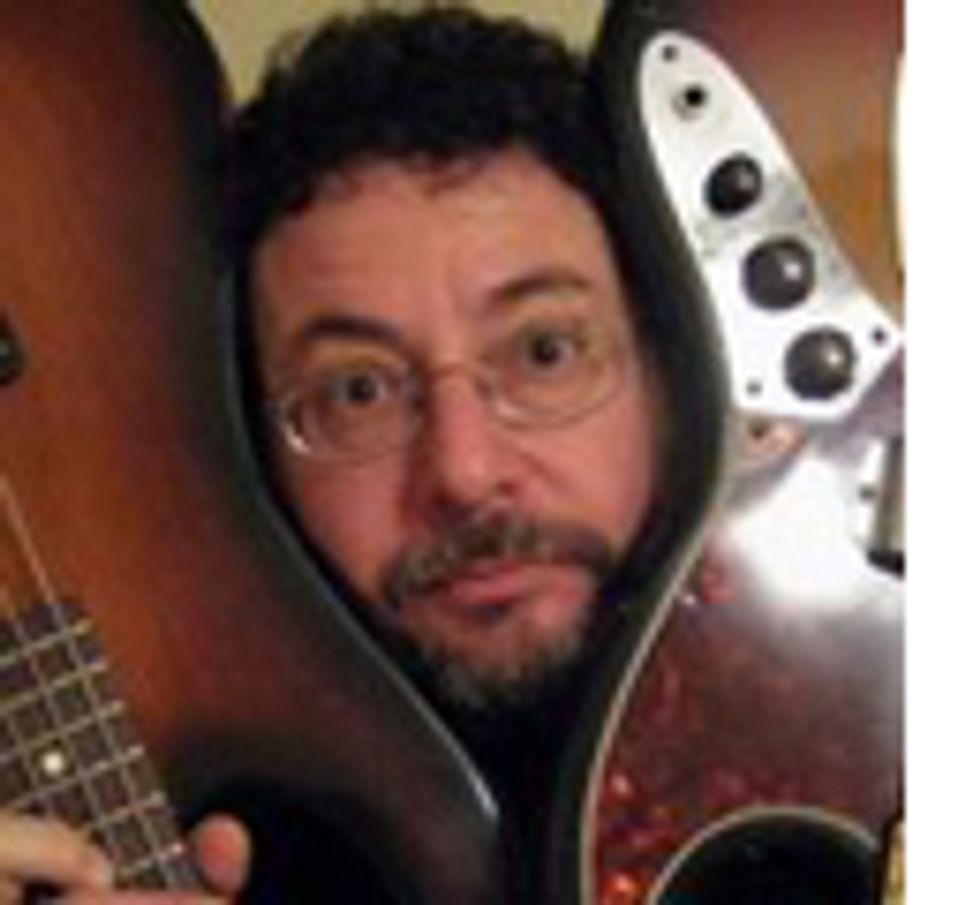
Dan Berkowitz, the "Dean of the Blues Bass," has played electric and upright bass since the early ''70s. He plays regularly with The Tornadoes - a blues, swing and R&B outfit that performs throughout the Midwest. Dan also plays acoustic blues, jazz and the occasional pit orchestra gig. Dan can be reached at tornadobass@mchsi.com


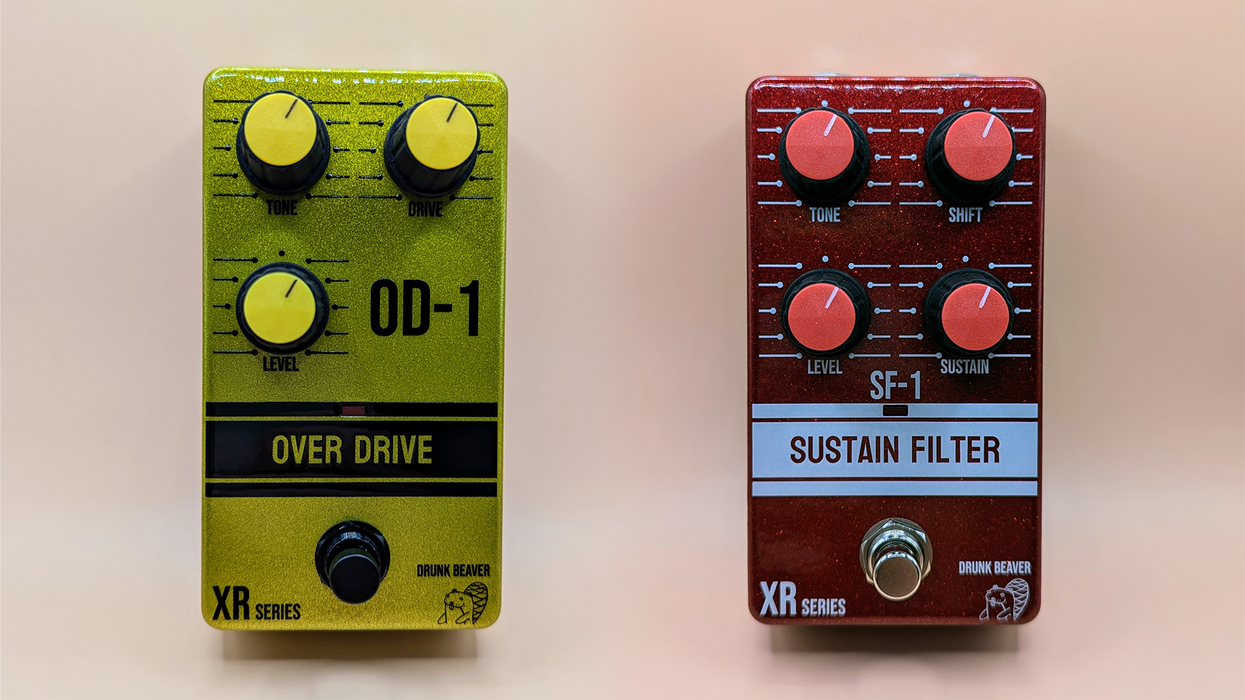
![Rig Rundown: John 5 [2026]](https://www.premierguitar.com/media-library/youtube.jpg?id=62681883&width=1245&height=700&quality=70&coordinates=0%2C45%2C0%2C45)
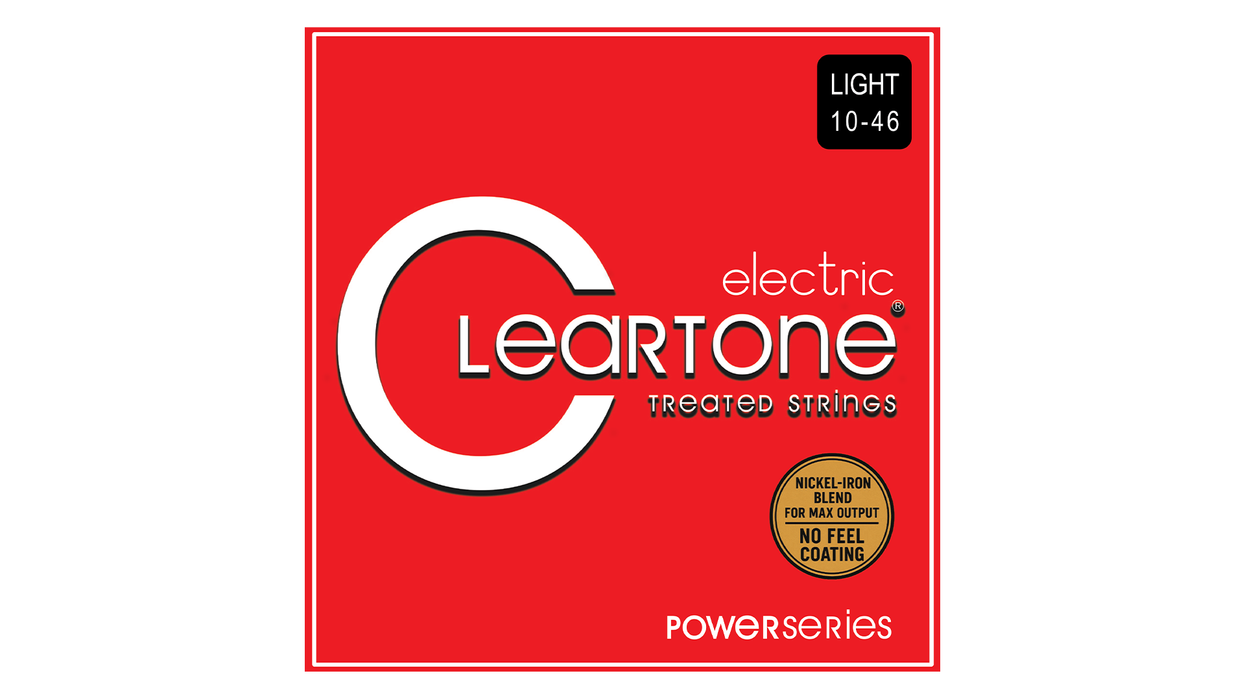
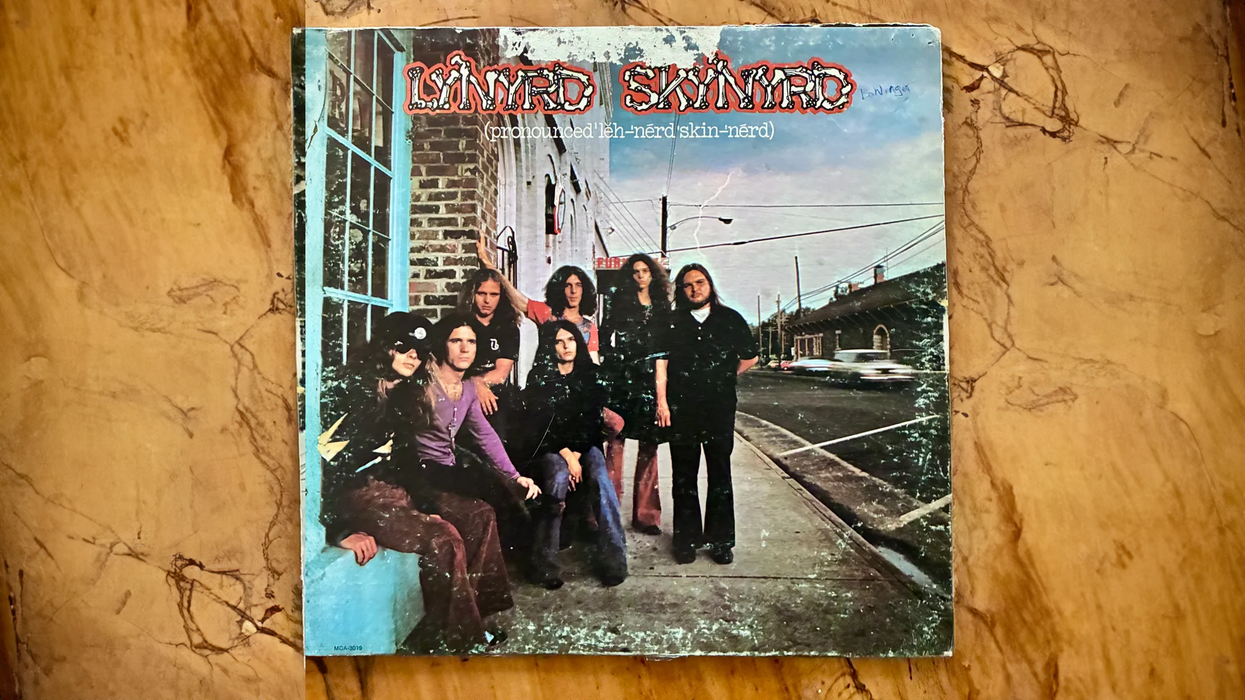


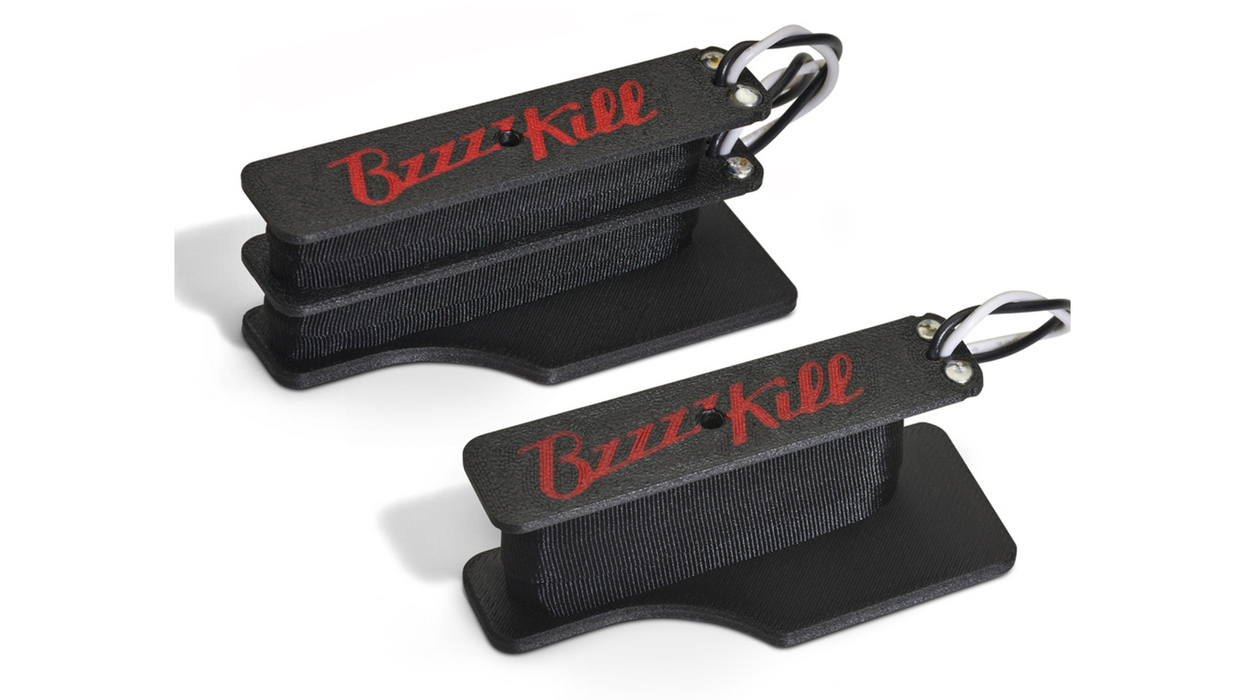


![Rig Rundown: Russian Circles’ Mike Sullivan [2025]](https://www.premierguitar.com/media-library/youtube.jpg?id=62303631&width=1245&height=700&quality=70&coordinates=0%2C0%2C0%2C0)


